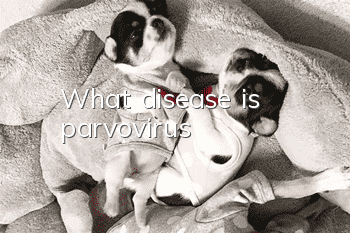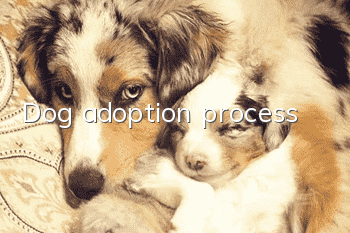What disease is parvovirus?

Canine parvovirus disease is an acute infectious disease caused by canine parvovirus infection of puppies. There are two clinical phenotypes. The hemorrhagic enteritis type is mainly characterized by severe vomiting, hemorrhagic enteritis and significant decrease in white blood cells; the myocarditis type is characterized by sudden death. Regardless of the type of clinical manifestations, they are all characterized by high morbidity, mortality and high contagiousness.
Parvovirus belongs to the genus Parvovirus. Viruses have no envelope. CPV has strong resistance to the outside world, is resistant to alcohol, ether, and chloroform, and also has a certain tolerance to temperature. 65 ℃ for 30 seconds without losing its infectivity. Long-term storage at low temperature has no obvious effect on its infectivity. Survival at 4 ℃ ~ 10 ℃ for 6 months, 37 ℃ for 2 weeks, 56 ℃ for 24 hours, 80 ℃ for 15 seconds, infectivity only slightly reduced after 3 months at room temperature, and can survive in feces for several months to several years.
The most effective disinfectants against CPV include formalin, β-propiolactone, sodium hypochlorite, oxidants, etc. In addition, UV rays can also inactivate it. If toxic feces and intestines are refrigerated in a low temperature environment, their infectivity can be maintained for a long time. The prevalence of canine parvovirus has no obvious seasonality and can occur throughout the year, but is more common in winter and spring. Dogs carrying the virus are the main source of infection. The vomit, feces, and urine of sick dogs contain large amounts of viruses.
There are two ways of transmission: direct and indirect. The former is when a healthy dog without immunity is infected by direct contact with a sick dog. The latter is when a healthy dog without immunity eats contaminated water, feed, etc. and is infected. . This disease mainly affects puppies under six months old, especially those under three months old. Once infected, more than 50% of the disease is a combination of gastroenteritis and myocarditis, and the mortality rate is as high as 80%. Sometimes the infection rate can be as high as 100%.
Dogs are the main natural hosts of this disease. Dogs of all ages and genders are susceptible, but puppies are the most susceptible. It can occur all year round. Sudden changes in feeding and management conditions, long-distance transportation, cold, and crowding can all promote the occurrence of this disease. Sick dogs are the main source of infection, and vomit, saliva, and feces contain large amounts of viruses. Recovered dogs can still excrete poisons through their feces for a long time. Healthy dogs have direct contact with sick dogs or virus-carrying dogs, or contaminated feed and drinking water can cause infection through the digestive tract.
Studies have shown that humans, lice, flies and cockroaches can become mechanical carriers of CPV. Infection is caused by viral entry and the minimum infectious dose may be as small as 100 TCID50. After the virus invades, it replicates in the oropharynx during the first two days of infection, spreads to other organs through the bloodstream, and viremia occurs 3 to 5 days later. Although enteritis is usually manifest, parvovirus infection is systemic. The virus reaches the intestinal mucosa through the bloodstream rather than through the intestinal lumen. The virus mainly attacks 2 types of cells: intestinal epithelial cells and cardiomyocytes.
Transferrin receptor (TfR) has been confirmed to be the cell surface receptor of CPV virus. In dogs, CPV-2 spreads rapidly through the mouth and nose. The virus begins to replicate in the lymphoid tissue of the throat, mesenteric lymph nodes, and thymus, and then spreads to the intestinal crypts of the small intestine. CPV infects the intestinal crypt embryonic epithelial tissue, causing epithelial tissue destruction and collapse, leading to damage to normal cell renewal and shortening of intestinal villi. The main sites of disease are the intestines and the heart. The mucosal epithelial cells in all sections of the intestinal tract of sick dogs are necrotic and shed, and the membrane propria is exposed. Intestinal gland epithelial cells also have varying degrees of necrosis and shedding. Myocardial cells become thinner, longer, partially ruptured, disintegrated, interstitial edema, myocardial capillaries dilated and congested. The number of lymphocytes in the spleen and lymph nodes is reduced. Various other organs have varying degrees of congestion, hemorrhage, and inflammatory cell infiltration [10]. CPV-2 is mainly distributed in the gastrointestinal epithelium, tongue, oral cavity and throat mucosa, small intestine and lymphoid tissues (such as thymus, lymph nodes and bone marrow). In addition, viruses can be isolated from lungs, spleen, liver, kidneys and myocardium. CPV-2 also disrupts the activity of circulating lymphocytes and lymphoid cells. In severe infections, neutropenia and lymphopenia often occur.
Usually the virus can be excreted to the outside world through feces 3 to 4 days after infection. At this time, the virus is scattered individually and is most contagious. After 7 to 10 days, with the increase in the production of IgA in the intestinal mucosa and the IgM and other CPV-specific antibodies that enter the intestine with bleeding, the scattered viruses are agglutinated together, the infectivity is reduced, and the hemagglutination is greatly reduced or even lost. Serum antibodies can be detected at the same time, and serum antibodies can remain in the body for at least 1 year
Most of the canine parvovirus vaccines used in recent years are attenuated vaccines, which allow the dog to produce antibodies to form a memory. If there is an infection, it can be generated based on the memory next time. It can effectively prevent and control canine parvovirus disease and can also resist Challenge with mutant strains such as CPV-2b. When maternal antibodies cannot provide sufficient protection (Nicola Decaro and other studies believe that maternal antibody HI ≥ 80 can provide comprehensive protection), many dogs will become infected within 1 week after birth. Neutralization assays have demonstrated differences in antibody prototyping and antibody levels, which may be clinically important when maternal antibodies are at minimal protective titers. At the same time, maternal antibodies also interfere with immunization, resulting in immunization failure. A strain of parvovirus CR86106 was isolated from minks, which can overcome the interference of maternal antibodies, is genetically stable, and has good immune effect. It has become an attenuated vaccine strain for the prevention of CPV in my country. Generally speaking, vaccines should contain the latest antigen types to provide the most complete protection. For parvovirus, the capsid protein has changed very little over the past 30 years, and in theory, the CPV-2 vaccine can provide sufficient protection regardless of the new strain.
For details on treatment methods, please see: How to Treat Parvovirus
- How to treat canine demodicosis
- What medicine should a puppy take for diarrhea?
- What to do if your puppy has diarrhea and vomiting
- How to teach a dog to potty
- How to soak dog food
- Introduction to types of dog chew glue
- Reasons why dogs turn their intestines
- What to do if your dog is panting and short of breath
- Introduction to the Characteristics of Purebred Huskies
- How to clean a kennel



